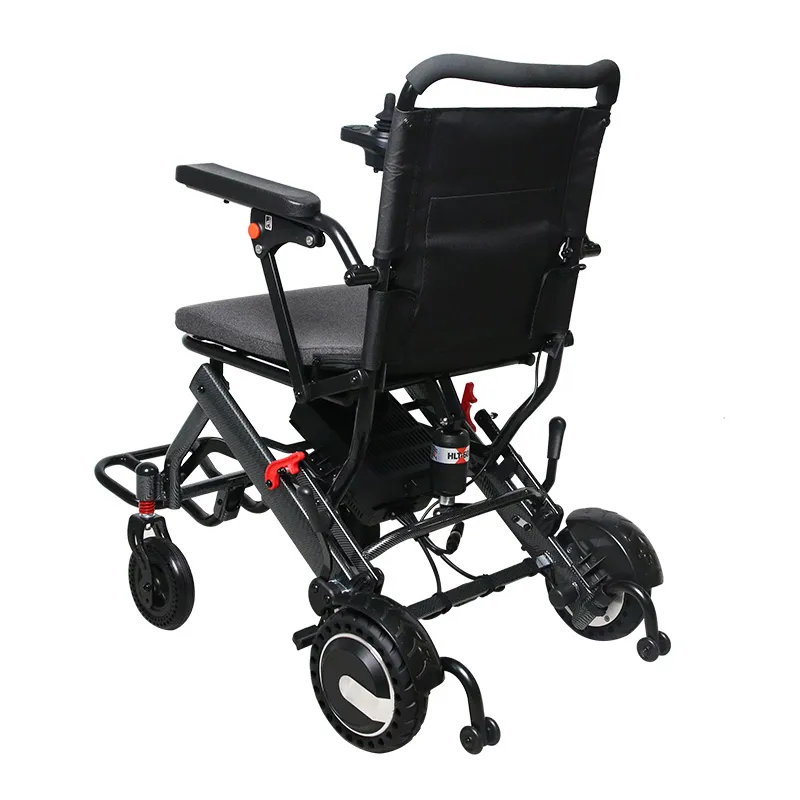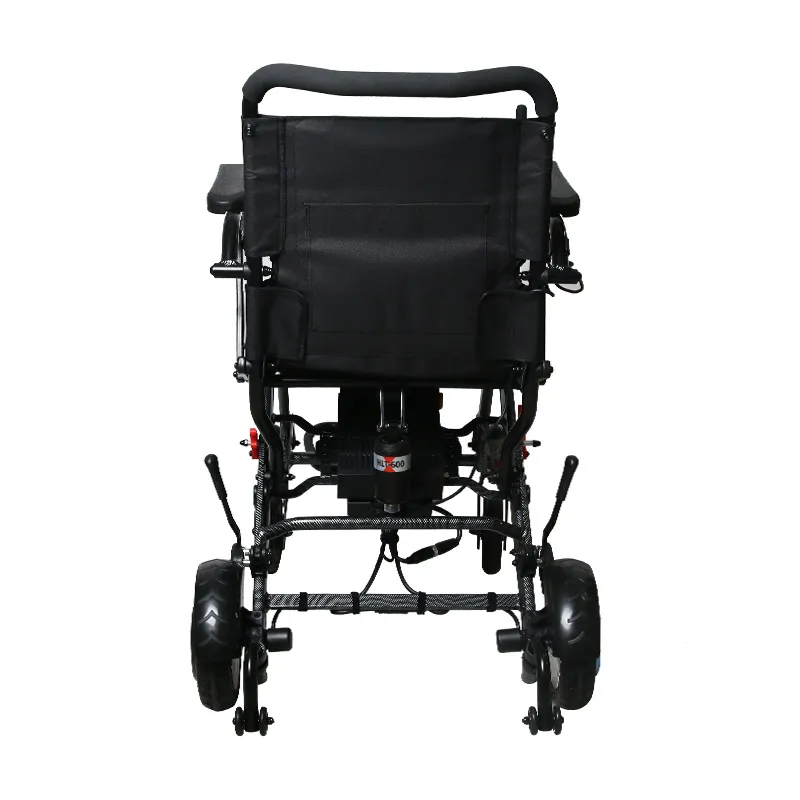Now, more and more elderly and disabled people who use power wheelchairs hope to be able to travel by plane like ordinary passengers. However, facing airport security, airline regulations, battery safety and wheelchair handling, many people still have questions: Can I take a power wheelchair on a plane?
This report will focus on this issue and systematically analyze the answer to this question from multiple dimensions such as policies and regulations, airline implementation standards, electric wheelchair classification, battery type management, and actual operation procedures.

Can I take a power wheelchair on a plane?
At the legal and policy level, it is allowed to take a power wheelchair on a civil aviation flight!
According to the Civil Aviation Law of the People's Republic of China and the relevant regulations of the Civil Aviation Administration of China (CAAC) on barrier-free travel, airlines must provide reasonable convenience for passengers with limited mobility, including disabled people and elderly people who use electric wheelchairs. This policy is consistent with international common rules, including the US Department of Transportation (DOT) and the European Aviation Safety Agency (EASA), which also regard barrier-free travel as a basic right of aviation services.
In particular, the "Guide to Accessible Civil Aviation Services" issued by the Civil Aviation Administration of China clearly states that airlines must accept applications for transportation of wheelchair passengers and provide them with services such as "priority boarding, assisted check-in, and temporary wheelchair replacement".
However, "allowed to board" does not mean "free boarding". Power wheelchairs have potential safety hazards due to their battery systems, and must meet specific conditions to be transported, especially strict requirements on battery specifications and disassembly capabilities.

Can all types of power wheelchairs be taken on airplanes?
Not all models of power wheelchairs are suitable for boarding. In actual operation, whether a power wheelchair can be taken on an airplane depends on the type and design structure of the power wheelchair. At present, the power wheelchairs on the market can be roughly divided into the following categories:
1. Lightweight folding power wheelchair (suitable for boarding)
Lightweight folding power wheelchairs are the most suitable models for boarding because of their compact structure, light weight, and usually equipped with removable or exposed batteries. For example, some power wheelchairs are designed for air travel. When folded, they only need 20 inches of luggage space. The battery capacity is lower than the air transport limit and can be easily removed.
Most airlines allow passengers to carry the battery with them, and the fuselage is checked as luggage. This type of electric wheelchair usually uses lithium batteries with a capacity of no more than 300Wh or dry batteries with a rated voltage of less than 24V, which meets the dangerous goods management standards for civil aviation transportation.
2. Medium or non-foldable electric wheelchair (conditionally allowed)
Medium-sized electric wheelchairs are mostly medical auxiliary types, equipped with large motors and high-capacity batteries. If the battery is not removable or exceeds the air transport capacity limit (such as a single battery exceeding 300Wh), it depends on the specific airline's transportation capacity and aircraft model.
If the wheelchair battery is a non-sealed lead-acid battery or a non-removable lithium battery, it may be denied boarding when taking some small flights (especially regional airlines). This type of electric wheelchair needs to contact the airline in advance to obtain clear written transportation permission.
3. Heavy power wheelchair or multifunctional standing electric wheelchair (mostly not suitable for boarding)
Heavy electric wheelchairs are usually equipped with high-power motors and large-capacity battery systems, weighing more than 60 kg, with complex structures, difficult to carry, and some models do not support battery removal. Such products are often refused to be checked in on international long-distance flights.
Even if they are barely checked in, the risks during handling, storage, and landing are high. Most airlines do not recommend or accept such electric wheelchairs for boarding.

Batteries of power wheelchairs: key factors affecting boarding
Among all the influencing factors, batteries are the core of the airlines' most concern. The International Civil Aviation Organization (ICAO) and the International Air Transport Association (IATA) have clear regulations on the transportation of lithium batteries:
1. Battery type requirements
Lithium-ion batteries are standard equipment for most power wheelchairs, but must meet the following requirements:
· Rated energy of a single battery ≤300Wh
· If two spare batteries are carried, each spare battery ≤160Wh
· Sealed lead-acid batteries (AGM, GEL): Generally accepted for check-in, but must be well sealed, leakproof and explosion-proof
· Liquid batteries (wet batteries): Most airlines do not accept them, and transportation is difficult
2. Removal requirements
Airlines usually require that the battery of a power wheelchair must be removable and carried on board. If it cannot be removed, special transport approval can only be applied for, but the chance of rejection is high.
3. Labels and instructions
Passengers must prepare the battery instructions, battery capacity label (usually marked on the battery body) in advance, and equip it with a protective box or insulating bag. Many airports also require a battery compliance statement issued by the manufacturer.
How to bring a power wheelchair on board?
If you have determined that the power wheelchair model is suitable for travel, here is the complete process you should follow in actual travel:
Step 1: Inform the airline in advance
Most airlines require passengers to inform 48 hours in advance that they will be carrying a power wheelchair. The following information should be provided:
·Brand and model of power wheelchair
·Battery type and capacity (Wh number)
·Is it detachable
·Whether it is self-service and whether boarding is required
Some airlines have a special "barrier-free passenger service channel" that can be registered in advance through the customer service phone, official website or airport counter.
Step 2: Check-in and security check
·After arriving at the airport, you should go to the special passenger service counter to check in
·If the power wheelchair is foldable, the staff will assist you to collect it at the boarding gate
·Remove the battery, mark the positive and negative poles, and seal it in an insulating bag
·Carry the battery through security check and check the main body
Step 3: Boarding and arrival
·Passengers can choose to borrow an airport wheelchair temporarily to board the plane
·After arriving at the destination, the power wheelchair will be returned at the baggage channel or outside the cabin door
·If damage or delayed delivery occurs, passengers have the right to claim compensation. It is recommended to purchase consignment insurance for the power wheelchair in advance

Electric wheelchair: There are slight differences in the regulations of major airlines
Take the three major airlines in China as an example:
1. Air China:
·Support electric wheelchair transportation
·The battery must be removable and carried with you
·Apply 48 hours in advance, and more supporting documents are required for international flights
2. China Eastern:
·Most lightweight power wheelchairs with removable batteries are acceptable
·Non-removable liquid battery models are refused to be transported
·Provide boarding wheelchair assistance
3. China Southern Airlines:
·Supports up to two spare batteries to be carried with you
·Provides wheelchair boarding gate handover service
·Special models require approval letter in advance
Different airlines have slightly different policies. Passengers are strongly advised to understand in advance and communicate with customer service to confirm.
Electric wheelchair: Additional regulations to pay attention to when taking international flights
If you use an electric wheelchair to travel abroad or take international flights, you also need to consider the relevant restrictions of the destination country:
1. US aviation transportation regulations require airlines to provide barrier-free services for people with disabilities, but strictly manage battery specifications
2. Most airports in the EU require lithium batteries to be CE certified and must not exceed the specific capacity limit
3. Airlines such as Japan Airlines and ANA clearly mark the acceptable electric wheelchair models and battery capacities, and the procedures are complicated
Before leaving the country, you should contact the airline's local office or embassy or consulate to confirm that they are correct before booking a ticket.
Power wheelchairs can be taken on planes, but they must be "compliant + prepared in advance"
Back to the title: "Can I take a power wheelchair on a plane?" The answer is clear: Yes, but it does not mean that all power wheelchairs can be taken on planes at will.
Lightweight, foldable, and using removable small-capacity lithium batteries, power wheelchairs are the best choice for flying. Medium-heavy or non-removable electric wheelchairs face greater restrictions and may even be refused transportation. Aviation safety always takes priority, and airports and airlines will strictly review the compliance of electric wheelchairs during transportation.
What certification ensures product quality?
At Dayang Medical, quality assurance is our top priority. We hold multiple certifications—ISO9001 (Quality Management), ISO13485 (Medical Devices), FDA registration, and TÜV approval—to guarantee safety and reliability. Our major product lines like electric wheelchairs, manual chairs, hospital beds, walkers, rollators, commodes, shower chairs, and walking aids are CE marked for global compliance.










